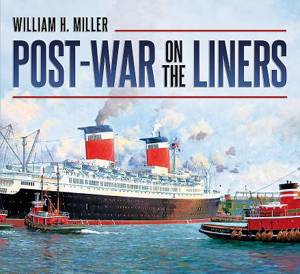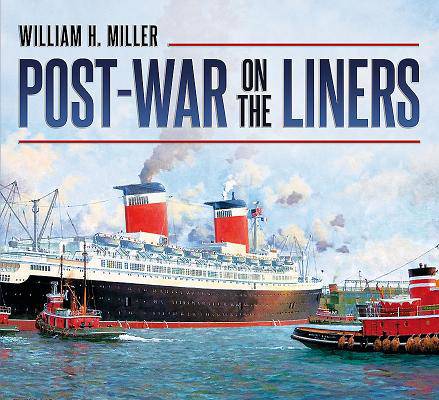
- Afhalen na 1 uur in een winkel met voorraad
- Gratis thuislevering in België vanaf € 30
- Ruim aanbod met 7 miljoen producten
- Afhalen na 1 uur in een winkel met voorraad
- Gratis thuislevering in België vanaf € 30
- Ruim aanbod met 7 miljoen producten
Omschrijving
From the end of the Second World War through three decades, to the 1970s, traditional port-to-port, class-divided passenger ship business carried on. This meant all kinds of ships - from big liners to small, often rebuilt, ex-coastal steamers. Accommodations varied from luxurious suites with bedrooms, sitting rooms & marble baths in upper-deck accommodations to Spartan dormitories with as many as 50 berths and communal facilities. But the purpose was all but the same: to go from A to B. It was about the destination, whether with 100 pieces of baggage like the Duke & Duchess of Windsor on 5-night Atlantic crossings to little more than an overnight bag for a immigrant on a 6-week voyage from Europe out to Australia. This book examines, through anecdotes & collected experiences, the many passenger ship services of now a bygone era. It is about the diversity and the contrast. There are of course the Atlantic crossings, but also three & four class ships to South America, combination passenger-cargo types carrying only 100 or so travelers, fast mail ships to South Africa, colonial passenger vessels to Mombasa, crowded migrant sailings to Sydney and Auckland, and trans-suez and trans-Pacific passages. All sorts of ships appear: big Cunarders like the Queen Mary, Italy's Augustus and Britain's Kenya & Uganda, the Oronsay and Southern Cross and even more remote ships such as the Cap Salinas, Tjinegara, Changsha and Hikawa Maru. It concludes with the closing down, in 1977, of the Union Castle Line's run between Southampton and the South African Cape, the last regular big liner service in the world.
Specificaties
Betrokkenen
- Auteur(s):
- Uitgeverij:
Inhoud
- Aantal bladzijden:
- 96
- Taal:
- Engels
Eigenschappen
- Productcode (EAN):
- 9781781553596
- Verschijningsdatum:
- 19/08/2015
- Uitvoering:
- Paperback
- Formaat:
- Trade paperback (VS)
- Afmetingen:
- 152 mm x 229 mm
- Gewicht:
- 434 g

Alleen bij Standaard Boekhandel
+ 53 punten op je klantenkaart van Standaard Boekhandel
Beoordelingen
We publiceren alleen reviews die voldoen aan de voorwaarden voor reviews. Bekijk onze voorwaarden voor reviews.









